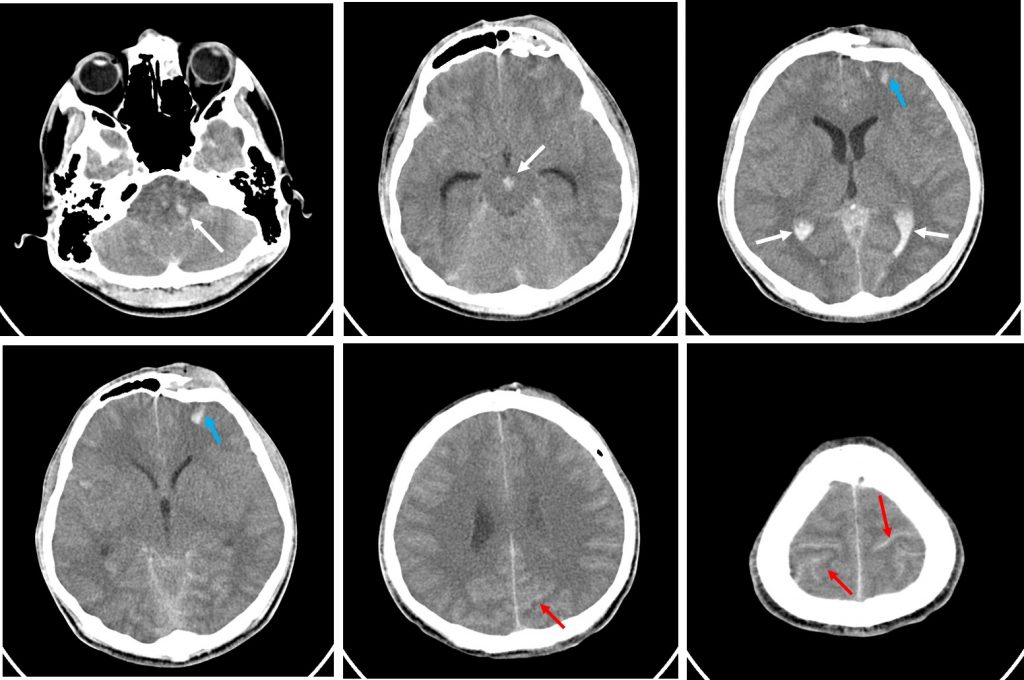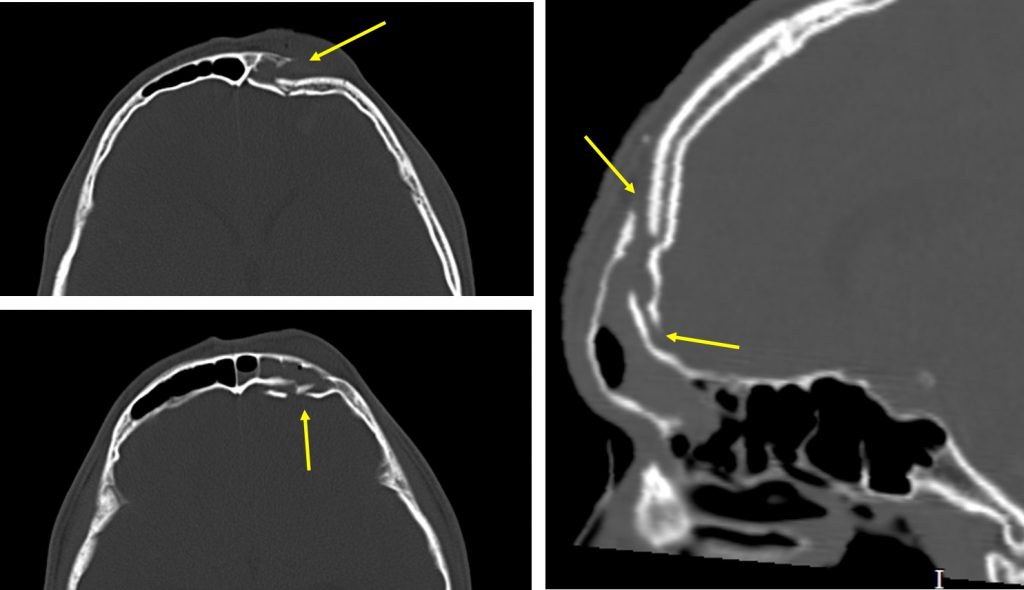Case contribution: Dr Radhiana Hassan
Clinical:
- An 18 years old, no known medical illness
- Alleged MVA
- Motorcyclist not wearing helmet
- Head on collision with a car
- Had loss of consciousness and retrograde amnesia
- GCS E3V5M6
- BP= 127/90 mmHg
- Had laceration wound at left forehead.



CT scan findings:
- There is comminuted fracture of left frontal bone. Fracture is seen involving the anterior and posterior wall of the left frontal sinus (yellow arrows).
- Depressed fracture fragment is seen into cranial cavity and into the frontal sinus.
- There is associated blood collection in the left frontal sinus.
- Other paranasal sinuses and mastoid air cells are clear.
- No other fracture of skull or facial bone is seen.
- Scalp hematoma with air pockets at left frontal region.
- A few small intraparenchymal hemorrhage at left frontal lobe (blue arrows)
- Subarachnoid hemorrhages at both frontal and parietal region (red arrows).
- Intraventricular hemorrhages seen involving all the ventricles and also within the CSF surrounding brain stem and spinal cord (white arrows).
Diagnosis: Traumatic intracranial hemorrhages with frontal bone fracture involving the frontal sinus.
Discussion:
- Frontal bone can resist 400-1000 kg, thus it needs a high-velocity trauma to be fractured.
- Frontal bone fractures can be an isolated injury but it commonly extends to orbital roof, nose, dura and frontal sinus.
- The frontal sinus has an anterior and posterior wall. Fractures of anterior plate alone are facial injuries, requiring cosmetic surgical treatment by otolaryngology or plastic surgeon if depressed. Fractures of the posterior plate are calvarial injuries and needs neurosurgical consultation.
- Frontal bone fracture with involvement of the frontal sinus is a relatively uncommon injuries in maxillofacial trauma.
- These injuries are quite challenging to treating surgeon due to its many possible complications.
- Possible complications include chronic headache due to injury to supraorbital nerve, chronic CSF leak, chronic frontal sinusitis, mucocele, mucopyocele, subdural empyema, frontal bone osteomyelitis, meningitis, brain abscess and residual forehead contour defect.
